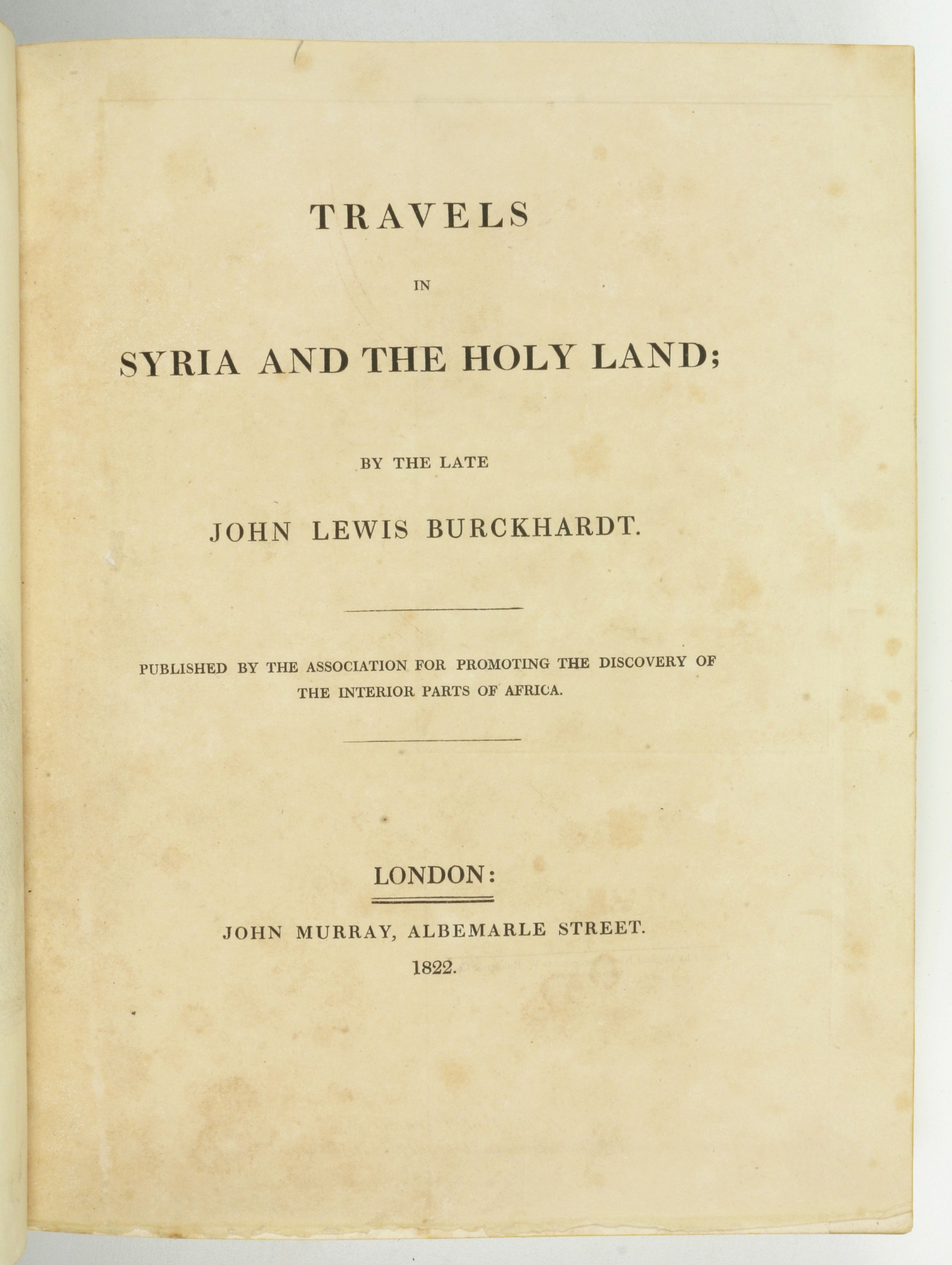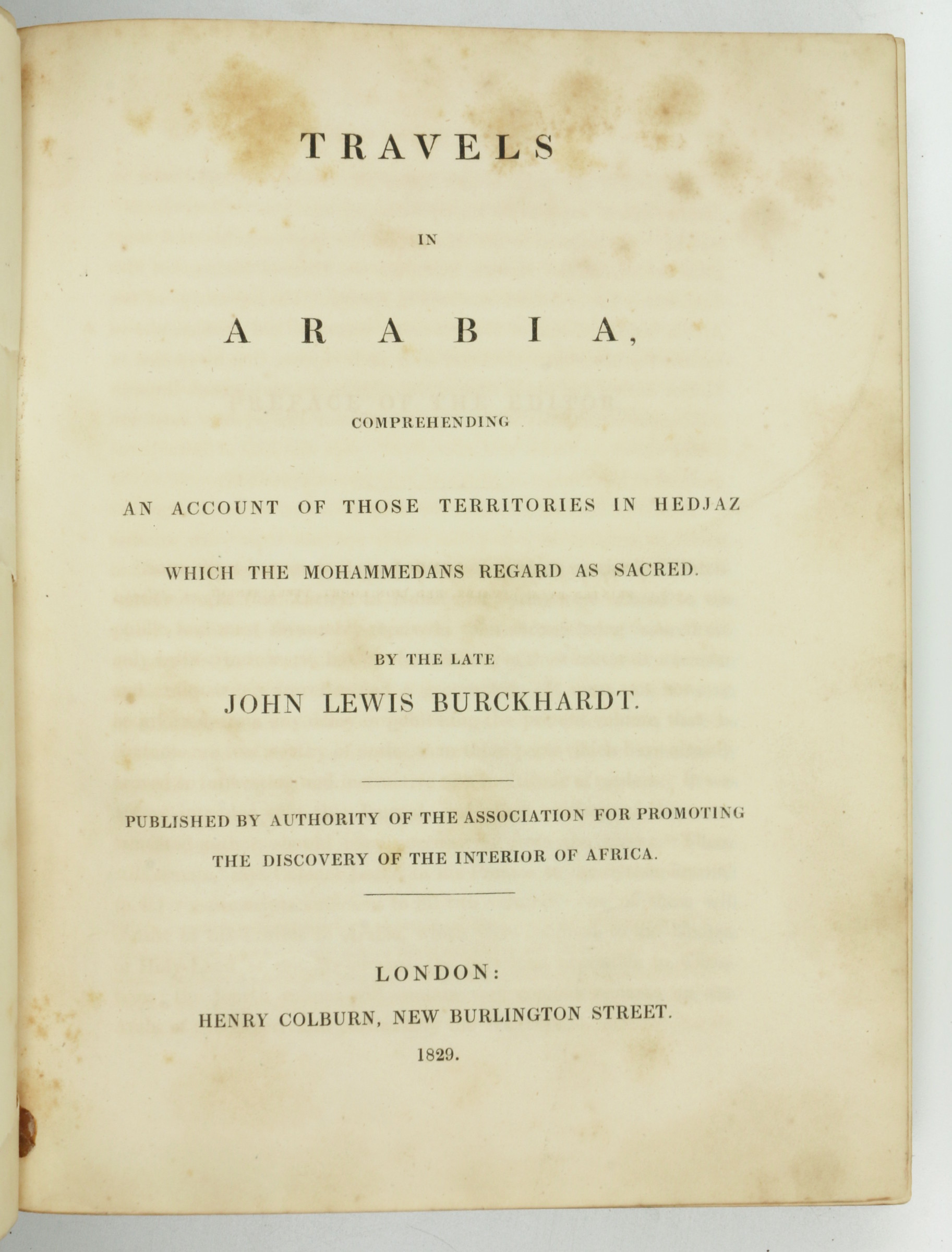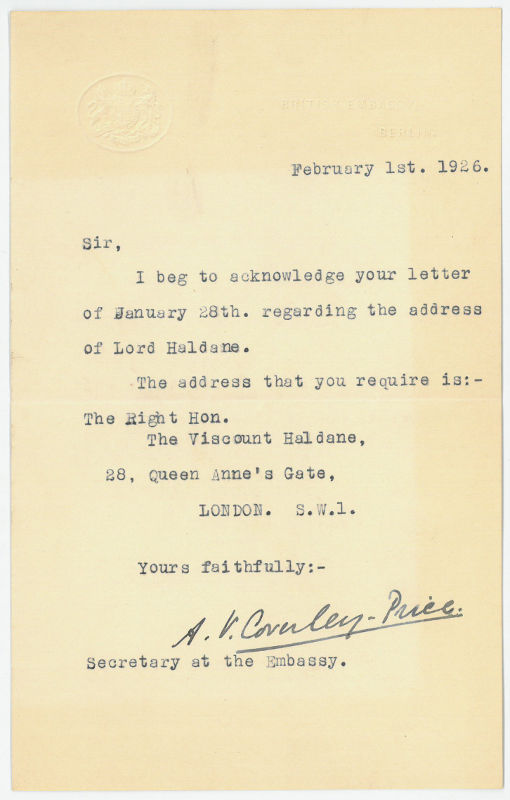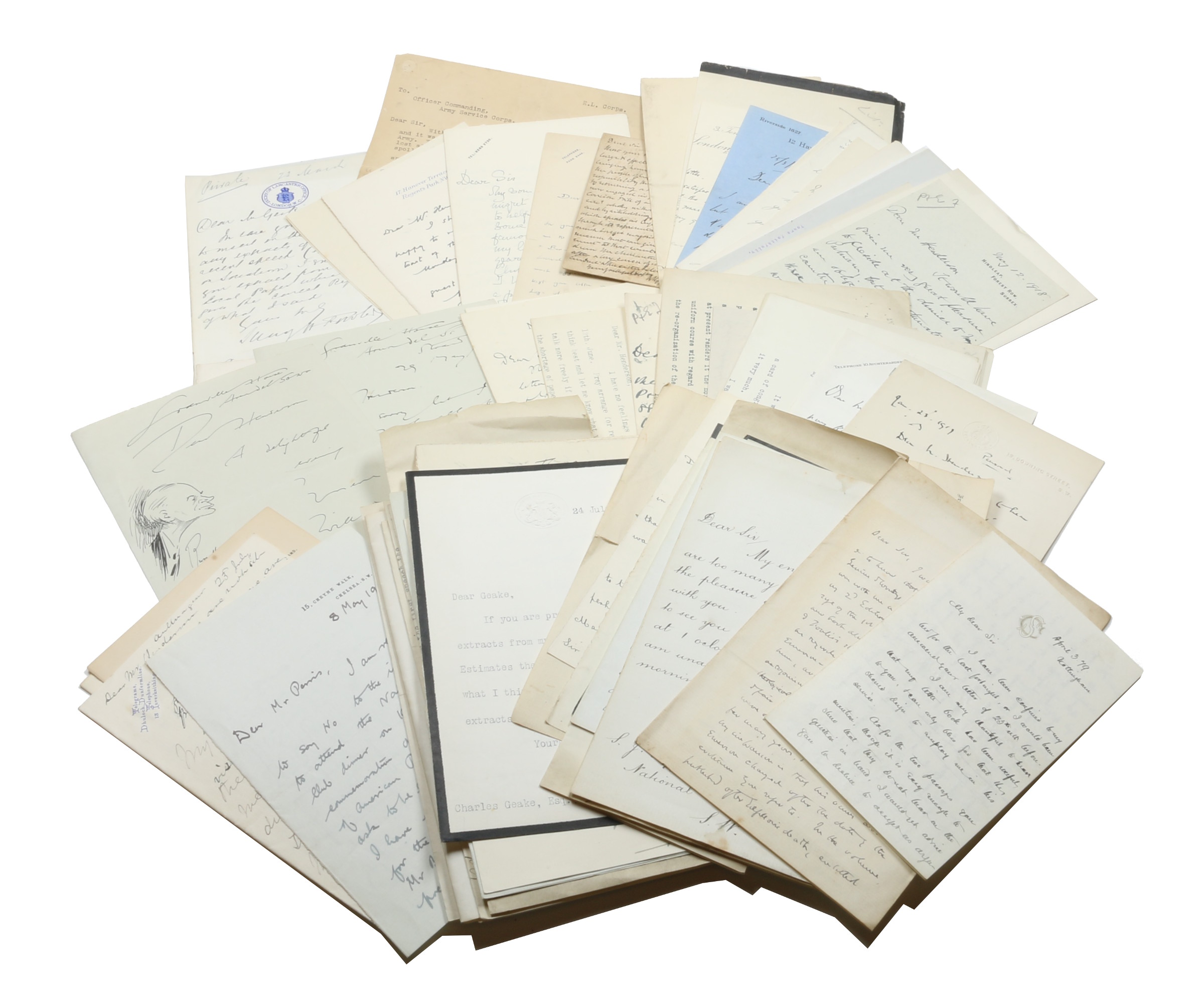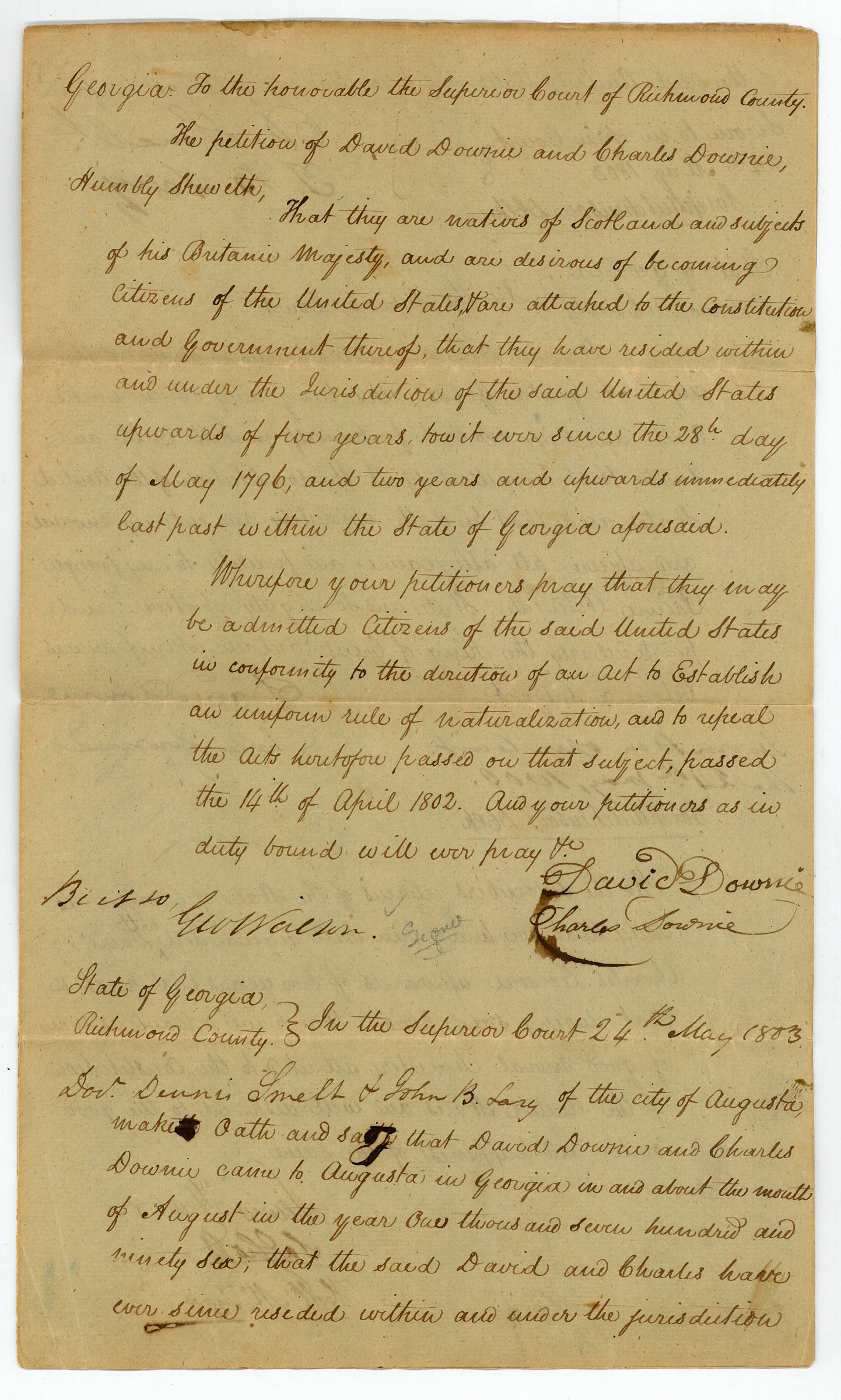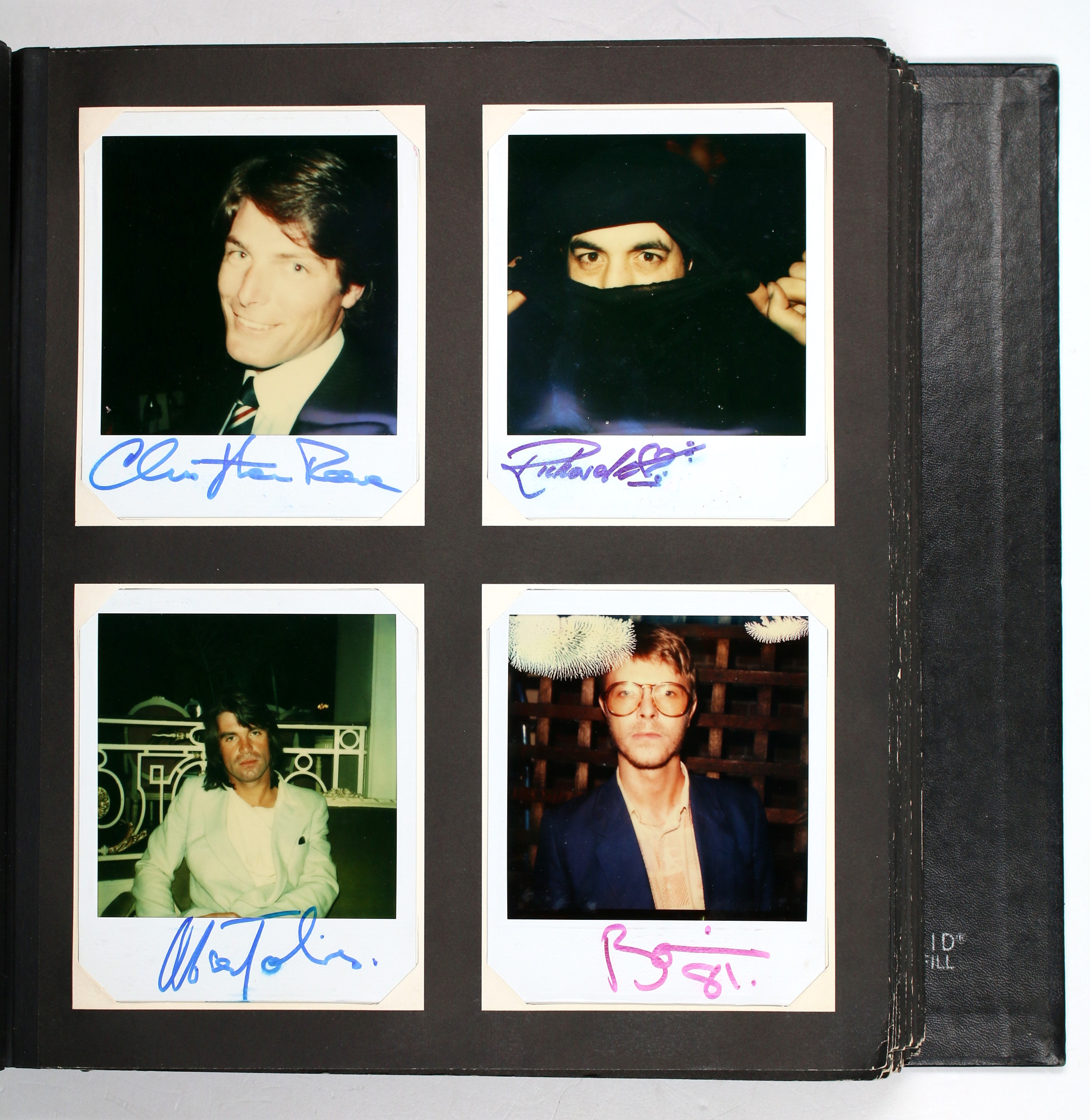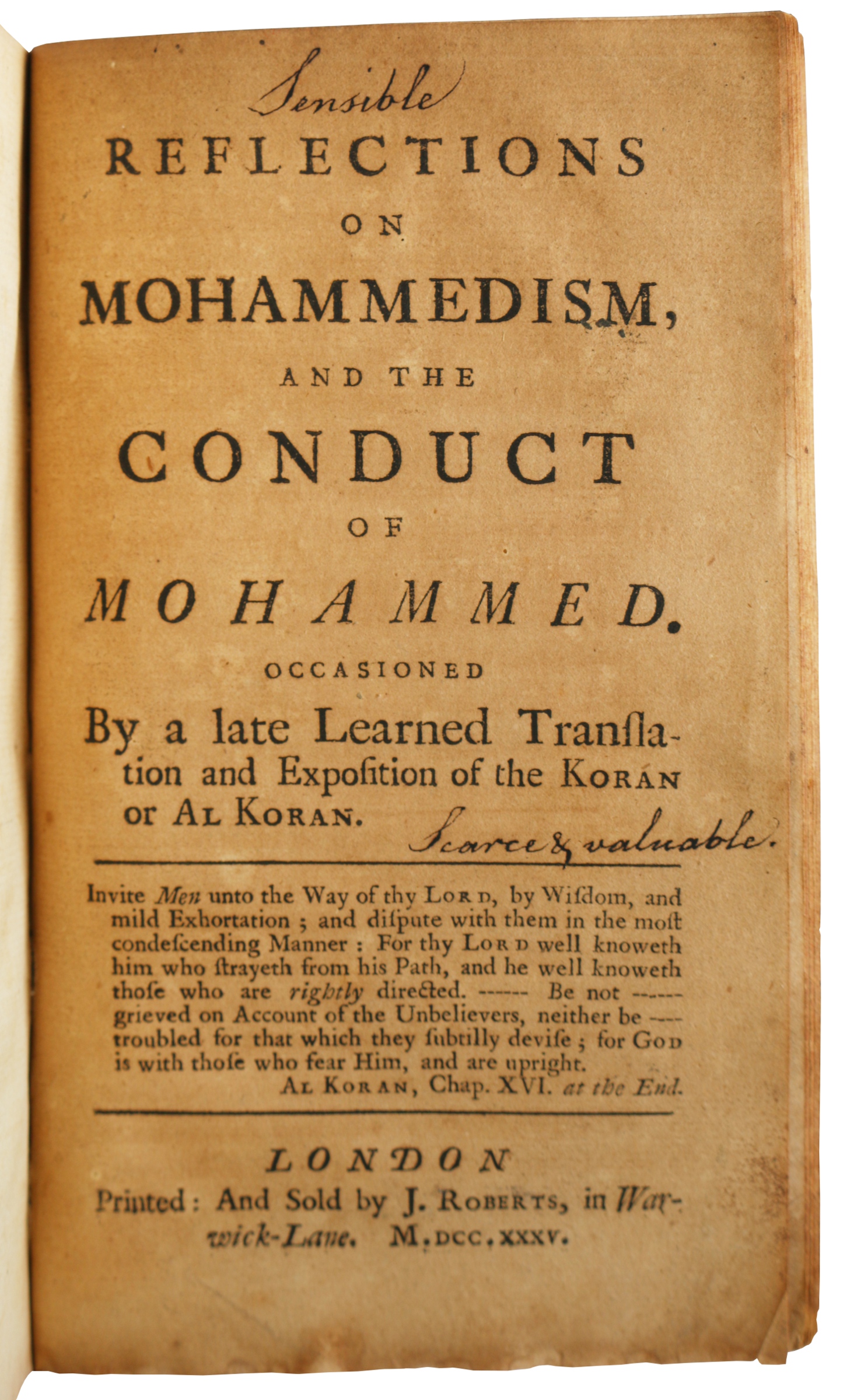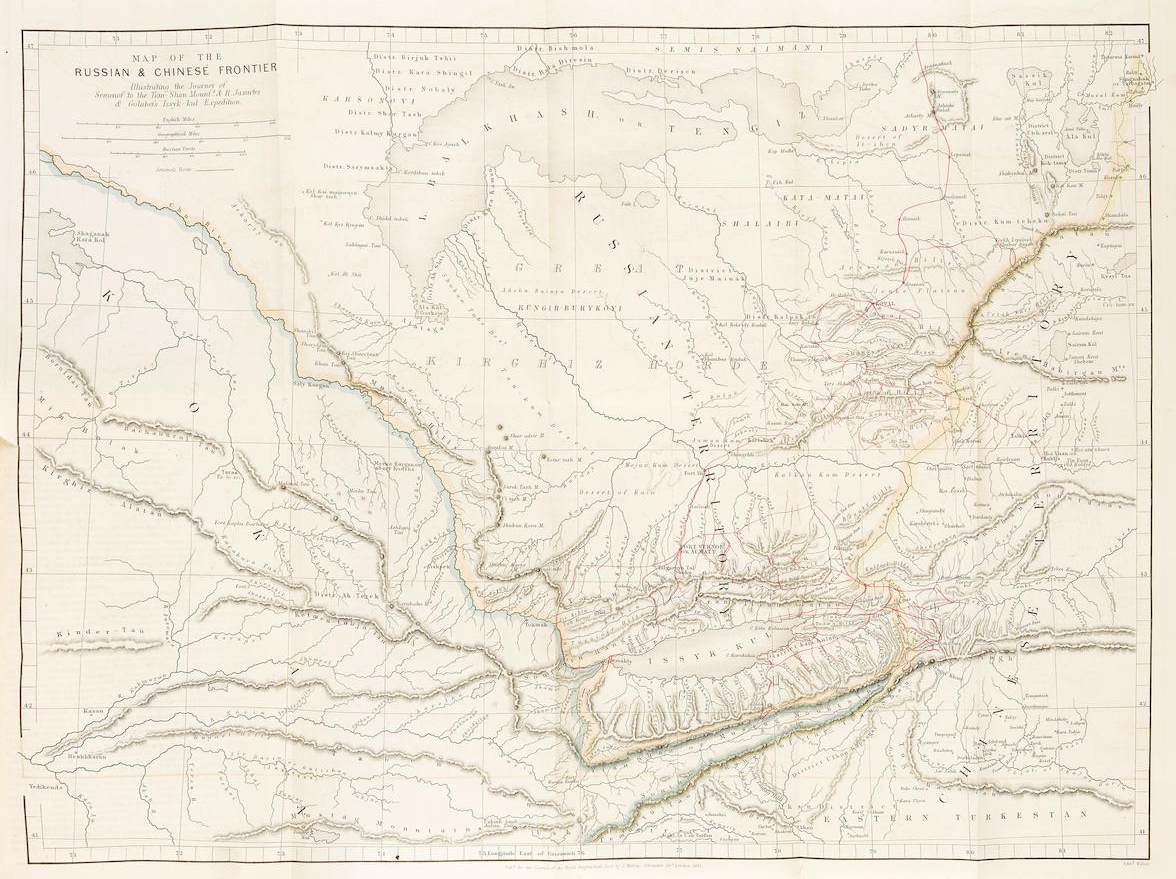
Complete set of all periodical publications of the Royal Geographical Society 1831 through 1948, comprising 203 volumes with thousands of plates and maps, many folding.
Founded in 1830, the Royal Geographical Society spearheaded efforts to accurately map and describe every corner of the known world. As lesser-known regions of the globe such as Africa and the Middle East began to emerge as major centres of global trade in the 19th century, the Society funded thousands of European expeditions to these areas in an effort to promote British commercial and scientific interests. Explorers of the Arabian Peninsula such as Henry St. John Philby (aka "Sheikh Abdullah"), Percy Cox, Theodore Bent, Gertrude Bell, Wilfred Thesiger (aka "Mubarak bin London"), and Bertram Thomas all reported directly to the Royal Geographical Society, and their accounts, often with accompanying maps, contributed enormously to the western interest in the economy and geography of these regions. Macro's "Bibliography of the Arabian Peninsula" - the only major attempt to date to itemize the most important publications on the Arab World - draws heavily on the papers published in the Journal of the Royal Geographical Society, especially for 19th century descriptions of the Arabian Gulf and its inhabitants.
Collected here is the entire run of publications issued by the Royal Geographical Society up to the mid-20th century - a full 203 volumes containing thousands of seminal articles, plates, and maps chronicling the modern mapping of the world. Its importance for the Arabian Peninsula is well-reflected in Macro's bibliography. Wilson's 1833 "Memorandum Respecting the Pearl Fisheries in the Persian Gulf", James Wellsted's "Observations on the Coast of Arabia between Rás Mohammed and Jiddah" (1836), and Felix Haig's "Memoirs of the Southeast Coast of Arabia" (1839) are among the earliest reports on those regions. Georg Wallin delivered a valuable report on the Hajj to the Society in 1854 in his "Narrative of a Journey from Cairo to Medina and Mecca"; William Palgrave is today regarded as one of the most important European explorers of the Peninsula, and his "Observations made in Central, Eastern and Southern Arabia, 1862-3" is found in the 1864 volume of the Journal. A lesser-known figure is Lewis Pelly, who in the Proceedings of the Royal Geographical Society (1863) delivered a remarkably prescient lecture, "On the Geographical Capabilities of the Persian Gulf as an Area of Trade" - highlighting the future importance of the tribes and territories of the Gulf as global commercial centres, from Kuwait down to the coasts mainly controlled by "Arab pirates". He also contributed "A Visit to the Wahabee Capital, Central Arabia" (1865) - a fascinating, early account of Riyadh.
The 1890s saw a spurt of accounts of the Gulf in the Journal by Theodore Bent including "The Bahrein Islands, in the Persian Gulf" (1890), "Expedition to the Hadhramaut" (1894), and "Exploration of the Frankincense Country, Southern Arabia" (1895). Also of note was an important study of the historical importance of Gulf ports such as Bahrain, discussed in Arthur Stiffe's 1897 article "Ancient Trading Centres of the Persian Gulf". From this point on contributions on the Peninsula become too numerous to list: among them are Frank Clemow's "A Visit to the Rock-Tombs of Medain Salih and the Southern Section of the Hejaz Railway" (1913); Sir Percy Cox's "Overland Journey to Maskat from the Persian Gulf" (1902) and his fascinating account of Abdul Aziz Ibn Saud, "The Wahabi King" (1928); Gertrude Bell's "A Journey in Northern Arabia" (1914); Lees's "The Physical Geography of Southeastern Arabia" (1928); Holt's "The Future of the North Arabian Desert" (1923); Harry St. John Philby's "Account of Explorations in the Great South Desert of Arabia" (1933); Cheesman's description of the Arabian coastline between Qatar and Bahrain, "From Oqair [Al Uqair] to the ruins of Salwa" (1923); Bertram Thomas's "A Journey into the Rub' al-Khali" (1931) and "The Southeastern Borderlands of the Rub' al-Khali" (1929); Lees's "The Physical Geography of Southeastern Arabia" (1928); and Cochrane's early aerial surveys of Southern Arabia ("Air Reconaissance of the Hadhramaut", 1931). We also find several papers by R. E. Leachman - "the second Lawrence", murdered in Iraq in 1920 - including his "Journey Across Arabia" (1913) and "A Journey through Central Arabia" (1914). Wilfred Thesiger, who drew attention to the borderlands between present day UAE and Oman, contributed "A New Journey in Southern Arabia" (1946); "Journey through the Tihama, the Asir and the Hijaz Mountains" (1948); and "Across the Empty Quarter" (1948) to the Journal, and we also find K. C. Jordan's "adjustments" to Thesiger's map of Southeastern Arabia in Vol. 111 (1948).
